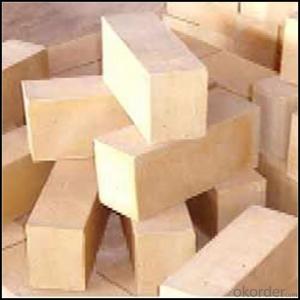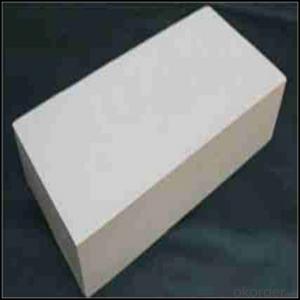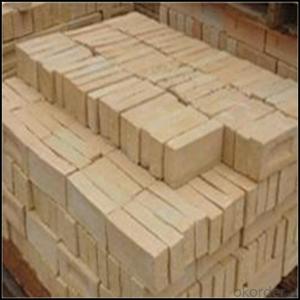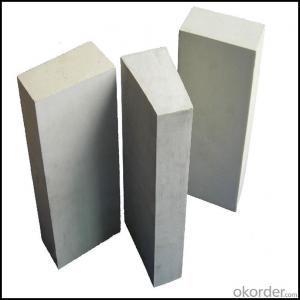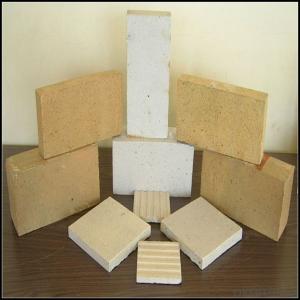Refractory Bricks for Cement Industry
- Loading Port:
- China main port
- Payment Terms:
- TT OR LC
- Min Order Qty:
- 0.01
- Supply Capability:
- 2000 m.t/month
OKorder Service Pledge
OKorder Financial Service
You Might Also Like
Acid Resistant Brick
CMAX firebricks are classified under temperature between 1300℃ to 1700℃, manufactured from high purity alumina clay.
High alumina refractory brick is dense shaped refractory material. With high refractoriness and mechanical behavior under high temperature, refractory brick is the necessary material of high-temperature services, mainly used for industrial furnaces and kilns and thermal equipment.
High alumina refractory brick has wide applications, mainly used in metallurgy, construction(cement and glass), petroleum, chemical industry, electric power and machine building.
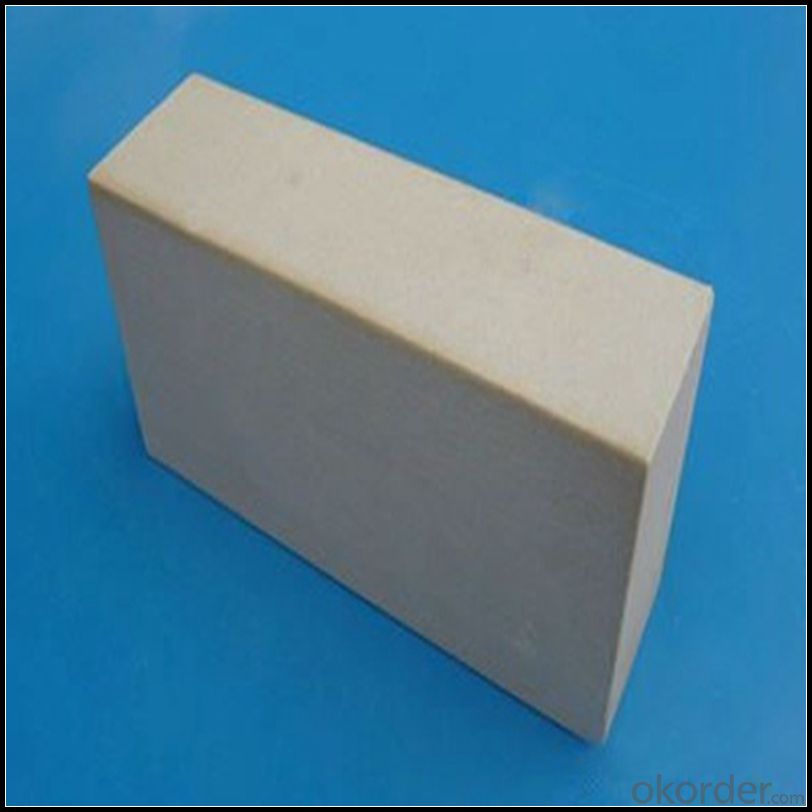
Features
Low thermal conductivity
High purity and low iron content
Good thermal resistance with direct access to fire
Superior thermal shock resistance
Accurate dimension and easy cutting
Application
Cracking Furnace
Conversion Furnace
Heating equipment
Refining equipment
Reproduction equipment
Hot Blast Stove
Data Sheet
Classification Temperature (℉/℃) | 3000/1650 |
Bulk Density (g/cm3 ) | ≤1.0 |
Thermal Conductivity | |
800℃, W/m.K | ≤0.39 |
1000℃, W/m.K | ≤0.43 |
1200℃, W/m.K | ≤0.48 |
Reheating Linear Change (%) | 1550℃×12h |
≤0.9 | |
Chemical Composition (%) | |
Al2O3 | ≥75 |
Fe2O3 | ≤0.5 |
Packaging & Shipping
Packaging Details:Be packed in fumigated wooden pallets
Delivery Detail: 30 days after order

Our Services
Optimum solution and product supply of refractories for high temperature industries, such as iron steel, non-ferrous, petrochemical and building materials.
Engineering design, contract and consult for refractories, and civil architecture design.
Research, development, manufacture and sale of superhard materials.
R&D, manufacture and sale of special packing materials for export.
Inspection, supervision and arbitration of refractories.
Consultation and services in refractories information.
Training and cultivation of high-level talents in refractories profession
Sales Network

Company Information
CNBM (China National Building Material) Group is the largest comprehensive building materials group in China that in integrate scientific research, manufacturing and logistics into one entity. The largest building materials and equipment specialists in China. Upon State Council approval, today CNBM owned more than 300 subordinate manufacturing factories and servicing companies. There are 6 fully owned public listed companies and 11 partially owned with substantial shares public listed companies. In many of these fields, CNBM is playing the leading role in the building industry in the country.
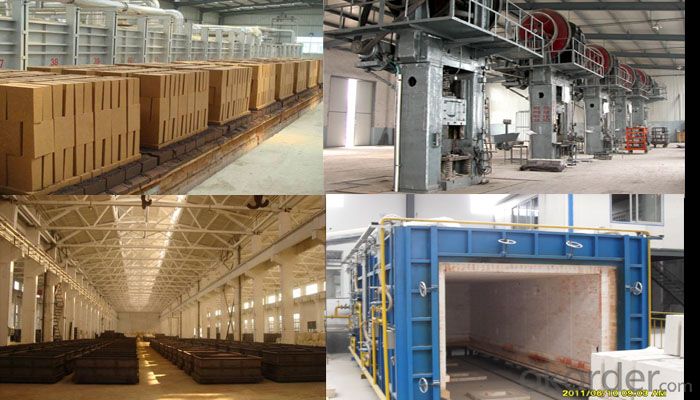
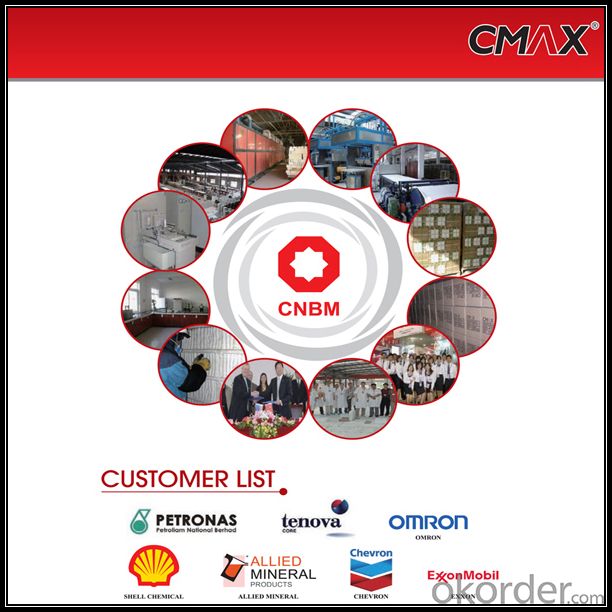
FAQ
1. Which products do you have?
We have all kinds of refractory brick, castable, mortar, cement, ceramic fiber products, etc.
Or you could browse our products to choose what you need.
2. Can you give me a brief introduction of the application of your products?
We are mainly specializing in the refractory materials in iron and steel, cement, glass, ceramics, petrochemical, electric power Industry, etc.
3. If I need your offer, what information do you need?
In order to choose suitable products, it will be appreciated to provide us the information, such us specification, technical data, order quantity, products application etc. If any question, please contact us freely.
- Q:Can insulating fire bricks be used in space heating applications?
- Yes, insulating fire bricks can be used in space heating applications. Insulating fire bricks are designed to have low thermal conductivity, which means they can effectively retain and distribute heat in a space heating system. These bricks are made from lightweight refractory materials that have excellent insulation properties, allowing them to trap heat and prevent its loss to the surroundings. This makes them ideal for use in space heating applications where energy efficiency is important. Additionally, insulating fire bricks can withstand high temperatures and are resistant to thermal shock, making them suitable for use in heating systems that operate at elevated temperatures. Overall, insulating fire bricks are a reliable and efficient option for space heating applications.
- Q:How do insulating fire bricks affect the overall noise reduction of a structure?
- Insulating fire bricks play a crucial role in reducing the overall noise levels within a structure. These bricks are specifically designed to have excellent sound absorption properties, making them highly effective in reducing noise transmission. The high-density and low-porosity nature of insulating fire bricks allows them to absorb and dampen sound waves effectively. When sound waves pass through the bricks, the energy of the waves is converted into heat due to the internal friction of the material. This conversion process helps to minimize the transmission of sound, resulting in a quieter environment. Additionally, insulating fire bricks are known for their thermal insulation properties, which indirectly contribute to noise reduction. These bricks help in maintaining a stable temperature within the structure, preventing the expansion and contraction of materials that can generate unwanted noise. It is worth mentioning that the impact of insulating fire bricks on noise reduction may vary depending on the specific construction and design of the structure. The thickness and placement of the bricks, as well as the presence of other sound-absorbing materials, should be considered to achieve the desired level of noise reduction. In summary, insulating fire bricks significantly contribute to the overall noise reduction of a structure by absorbing and dampening sound waves. Their ability to convert sound energy into heat, along with their thermal insulation properties, makes them an effective solution for creating a quieter environment.
- Q:Can insulating fire bricks be used in the construction of fireplaces?
- Insulating fire bricks are a viable option for fireplace construction. These bricks are specifically designed to endure high temperatures, making them perfect for lining the inside of a fireplace. Their exceptional thermal insulation capabilities ensure that heat is contained within the fireplace, preventing excessive heat transfer to the surrounding structure. This not only enhances the efficiency of the fireplace but also reduces the likelihood of damage to nearby walls. Furthermore, these bricks are lightweight and easy to work with, making them convenient for construction purposes. They are also resistant to thermal shock, meaning they can withstand sudden temperature changes without cracking or breaking. Overall, insulating fire bricks are a dependable and efficient choice for building fireplaces.
- Q:Do insulating fire bricks require any special storage conditions?
- Insulating fire bricks do not require any special storage conditions. These bricks are designed to withstand high temperatures and are typically made from materials such as clay or silica that are resistant to heat. However, it is always recommended to store insulating fire bricks in a dry and covered area to prevent any moisture absorption or damage. Additionally, it is important to handle these bricks with care to avoid any breakages or cracks that may affect their insulation properties. Overall, as long as the bricks are stored in a dry and protected environment, there are no specific special storage conditions required for insulating fire bricks.
- Q:How do insulating fire bricks affect the overall durability of a structure?
- The overall durability of a structure is significantly improved with the inclusion of insulating fire bricks. These bricks are designed with a low thermal conductivity, effectively resisting heat transfer. By limiting the amount of heat that passes through, they maintain a stable temperature within the structure, safeguarding it against extreme temperature changes. One of the primary advantages of insulating fire bricks is their capacity to endure high temperatures. They possess a high melting point, enabling them to maintain their structural integrity even in the presence of intense heat. This characteristic is particularly important in structures that generate high temperatures, such as furnaces or kilns. The ability of insulating fire bricks to withstand such extreme heat greatly contributes to the structure's durability. Additionally, insulating fire bricks offer exceptional insulation. Their low thermal conductivity prevents heat from escaping or entering the structure, resulting in energy efficiency. This not only reduces energy consumption, but also shields the structure from potential damage caused by excessive heat loss. By maintaining a consistent temperature, insulating fire bricks prevent thermal expansion and contraction, which can lead to cracks and structural instability. Apart from their resistance to heat and insulation properties, insulating fire bricks are also known for their resistance to chemical corrosion. Many structures are exposed to harsh environments or chemicals that can cause deterioration. However, insulating fire bricks are made from materials that resist chemical reactions, ensuring their durability and longevity. Overall, the utilization of insulating fire bricks significantly enhances the durability of a structure. Their capacity to endure high temperatures, provide insulation, and resist chemical corrosion makes them a valuable component in various industrial and residential applications. By ensuring a stable and protected environment, insulating fire bricks contribute to the long-lasting and reliable performance of the structure.
- Q:Can insulating fire bricks be used in rotary kilns?
- Yes, insulating fire bricks can be used in rotary kilns. Insulating fire bricks are designed to have low thermal conductivity, which means they are able to withstand high temperatures while minimizing heat loss. This makes them suitable for use in rotary kilns, which are used in various industries for processes such as calcination, sintering, and roasting. By using insulating fire bricks in rotary kilns, the heat generated inside the kiln can be effectively contained, leading to greater energy efficiency and cost savings. Additionally, the insulating properties of these bricks help to reduce the temperature on the outer surface of the kiln, making it safer for operators to work around the equipment. Overall, insulating fire bricks are a suitable option for rotary kilns, providing excellent thermal insulation and contributing to the overall performance and longevity of the kiln.
- Q:Can insulating fire bricks be used in oil refineries?
- Yes, insulating fire bricks can be used in oil refineries. These bricks are designed to withstand high temperatures and provide excellent insulation, making them suitable for various industrial applications, including oil refineries. They help to reduce heat loss, improve energy efficiency, and protect the surrounding equipment and structures from extreme heat.
- Q:Can insulating fire bricks be used in residential fireplaces?
- Residential fireplaces can indeed utilize insulating fire bricks. These specialized bricks are engineered to endure extreme temperatures while providing exceptional insulation, rendering them an apt option for constructing fireplaces. These bricks have the ability to retain heat, boost energy efficiency, and prevent heat loss. Moreover, they offer superior defense against thermal shock, a crucial element for enduring the intense heat produced by a fireplace. Furthermore, insulating fire bricks are lightweight, easy to manipulate, and can be effortlessly shaped or trimmed to fit any fireplace design or size. All in all, incorporating insulating fire bricks into residential fireplaces is a prudent decision for homeowners seeking to enhance their fireplace's performance and safety.
- Q:Can insulating fire bricks be used in the construction of kilns?
- Insulating fire bricks have the ability to be utilized in the construction of kilns. With a focus on possessing a high insulating value, these bricks can endure high temperatures while minimizing heat loss. This attribute renders them well-suited for the task of kiln construction as they effectively preserve and regulate the desired temperature within the kiln. Furthermore, these bricks are lightweight and easily manageable, adding to their convenience in kiln construction. An additional advantage lies in their resistance to thermal shock, an imperative characteristic for kilns that experience swift temperature fluctuations. In general, insulating fire bricks are a favored option for kiln construction due to their insulating properties, durability, and user-friendliness.
- Q:Is it possible to repair damaged insulating fire bricks?
- Repairing damaged insulating fire bricks is indeed possible, and the method required will depend on the extent and type of damage. For minor cracks or chips, one can utilize a refractory mortar that is specifically designed to endure high temperatures and create a strong bond. This mortar can effectively fill in the gaps and restore the brick's integrity. However, if a larger section of the brick is damaged or completely missing, it may be necessary to replace the entire brick. In such a scenario, the damaged brick must be cautiously removed, and a new one can be installed with the appropriate refractory mortar. It is crucial to ensure that the repaired or replaced brick adheres to the original specifications and quality to guarantee proper insulation and structural integrity. It is highly recommended to seek advice from a professional or carefully follow the manufacturer's guidelines for the specific repair process.
1. Manufacturer Overview |
|
|---|---|
| Location | |
| Year Established | |
| Annual Output Value | |
| Main Markets | |
| Company Certifications | |
2. Manufacturer Certificates |
|
|---|---|
| a) Certification Name | |
| Range | |
| Reference | |
| Validity Period | |
3. Manufacturer Capability |
|
|---|---|
| a)Trade Capacity | |
| Nearest Port | |
| Export Percentage | |
| No.of Employees in Trade Department | |
| Language Spoken: | |
| b)Factory Information | |
| Factory Size: | |
| No. of Production Lines | |
| Contract Manufacturing | |
| Product Price Range | |
Send your message to us
Refractory Bricks for Cement Industry
- Loading Port:
- China main port
- Payment Terms:
- TT OR LC
- Min Order Qty:
- 0.01
- Supply Capability:
- 2000 m.t/month
OKorder Service Pledge
OKorder Financial Service
Similar products
New products
Hot products
Related keywords
